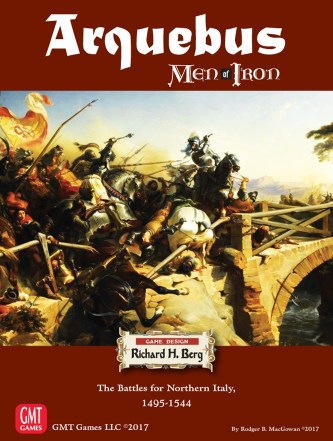Below you will find the second and final part in William Byrne’s “The Battle of Piedmont” AAR series. If you would like to read Part 1 first, you can find that here. Enjoy! -Rachel
Monthly Archives: June 2022
Arquebus Replay: The Battle of Ceresole — Part 3
by
Who Was Zheng He?
by
Zheng He was born in 1371 in Yunnan Province. His given name was “Ma He,” indicative of his family’s Hui Muslim origins since “Ma” is the Chinese version of “Mohammad.” His father was a hajji, a Muslim who had made the hajj (pilgrimage) to Mecca. Zheng He’s great-great-great-grandfather, Sayyid Ajjal Shams al-Din Omar, was a Persian governor of the province under the Mongolian Emperor Kublai Khan, founder of the Yuan Dynasty that ruled China from 1279 to 1368.
In 1381, when he was about 10 years old, Yunnan, the last Mongol hold in China, was conquered by Chinese forces led by generals of the Ming dynasty, which had overthrown the Yuan dynasty in 1368. The young Ma He was among the boys who were captured, and he was castrated and made a eunuch. Ma He was sent to Beiping (now Beijing) to serve in the household of 21-year-old Zhu Di, the Prince of Yan who later became the Yongle Emperor. Ma He distinguished himself as a junior officer, skilled in war and diplomacy, and soon became one of the prince’s closest confidants. In the 1390s, he served as a soldier, fighting on the northern frontier and participating in the Prince of Yan’s military campaigns against the Mongols.
Building Track in 18 India
by
“Rocks & Shoals”: Navigating Infernal Machine’s New Orleans Action Board — Part 2
by
Part Two: Down River from Port Hudson to Baton Rouge

Beginning April 16, 1862, the US Navy’s West Gulf Blockading Squadron under Flag Officer David Glasgow Farragut began a thunderous bombardment of the Confederate forts Jackson and St. Philip, guardians of the lower Mississippi River and the approaches to New Orleans, Louisiana. Seven nights later, on April 23, 1862, after a pitched river battle, Farragut‘s West Gulf Squadron steamed past the two forts.
Arquebus Replay: The Battle of Ceresole — Part 2
by
The Spanish player activates Madruzzo’s (Blue) wing.
Spanish Note – I want to get the battle started so I’ll move my center wing closer.
Ed. Note – For the first few moves we will show the units moving one at a time so we can show how the Missile fire works (BTW shouldn’t it really be referred to as “Ranged Fire” instead of missile fire?).
As the -1 PK unit moves adjacent to the French line, the SB unit (which is highlighted) will do Reaction Fire which happens when a unit enters one of its front two hexes.
Borikén: Why Did I Make This Game?
by
I have been designing games for 5 years. In that time, I have learned so much about the board game industry. One element of game design that instantly stood out to me and is thankfully being addressed by many publishers and designers is cultural appropriation in games. I remember how disappointed I was after my first play of Puerto Rico. While the game had so many interesting mechanics, the theme was not representative of what I knew my culture to be and greatly distracted me from the fun. While I didn’t know it at the time, my experience with Puerto Rico planted the desire in me to make a new game that shared a more holistic picture of my people.
My first experience of designing a game set in a culture that wasn’t my own was with Holi: Festival of Colors. The design that became Holi was originally pitched to Floodgate Game with a completely different theme, but Floodgate had been wanting to do a game with this theme and when they pitched the idea to me I was onboard. However, I urged them to have cultural consultants involved, so that we could be sure to do right by the theme. As it turns out, that was their plan all along and ultimately they did a great job incorporating and representing the theme in my game.Throughout that process, I learned that spending the time and resources to get that right made the game better and that there’s so much benefit that it should be a no brainer for all games that use real world cultures as a theme to make sure they bring in cultural experts.











